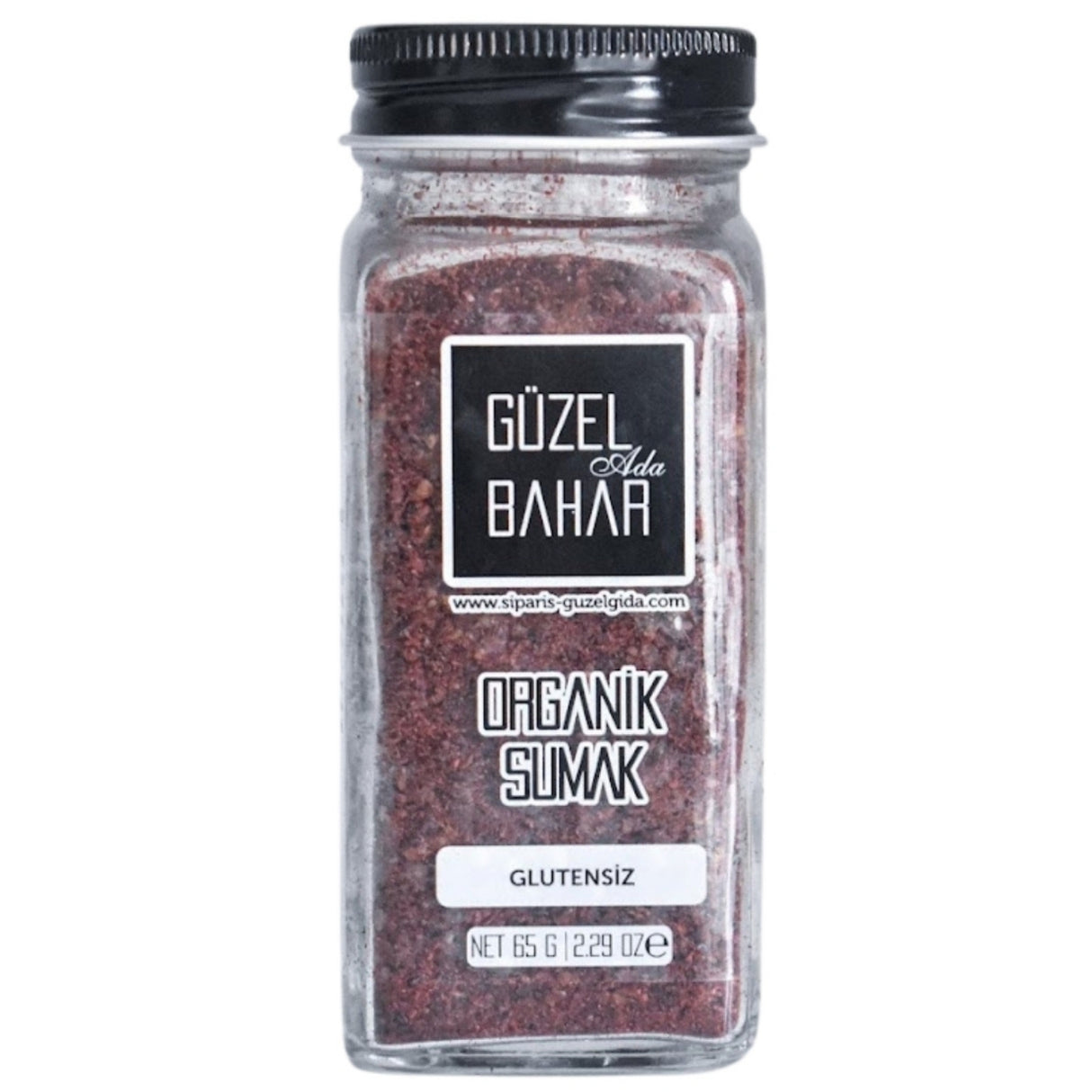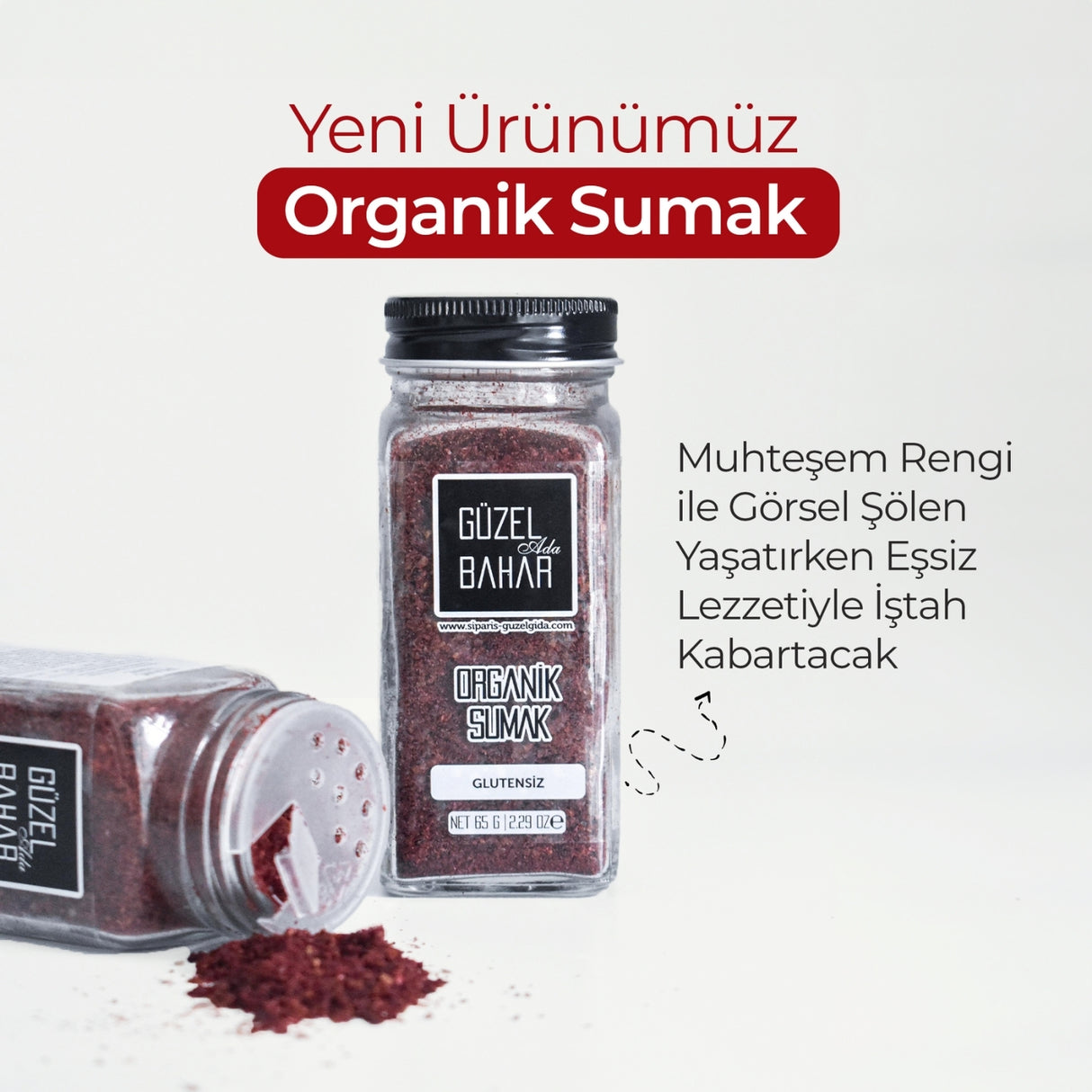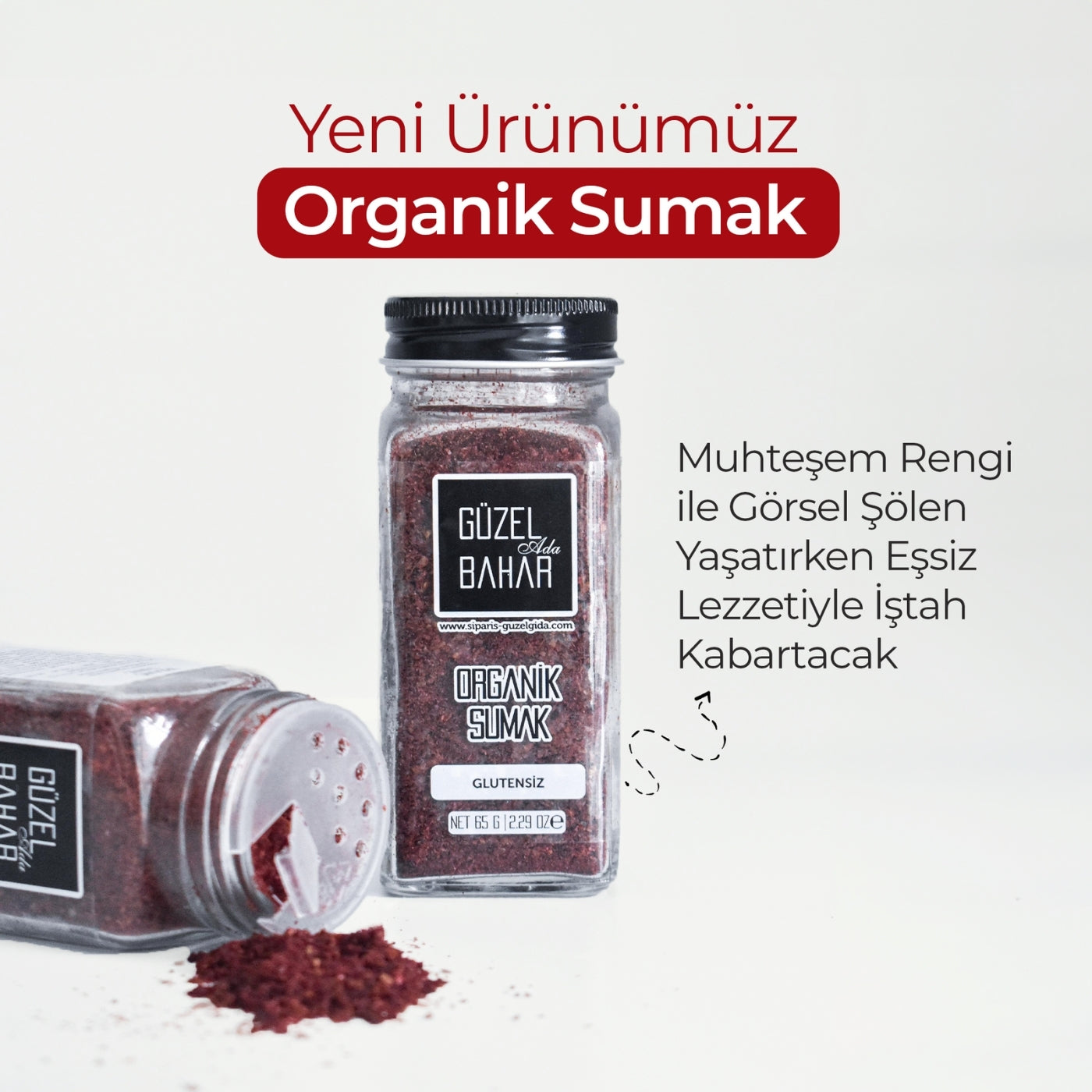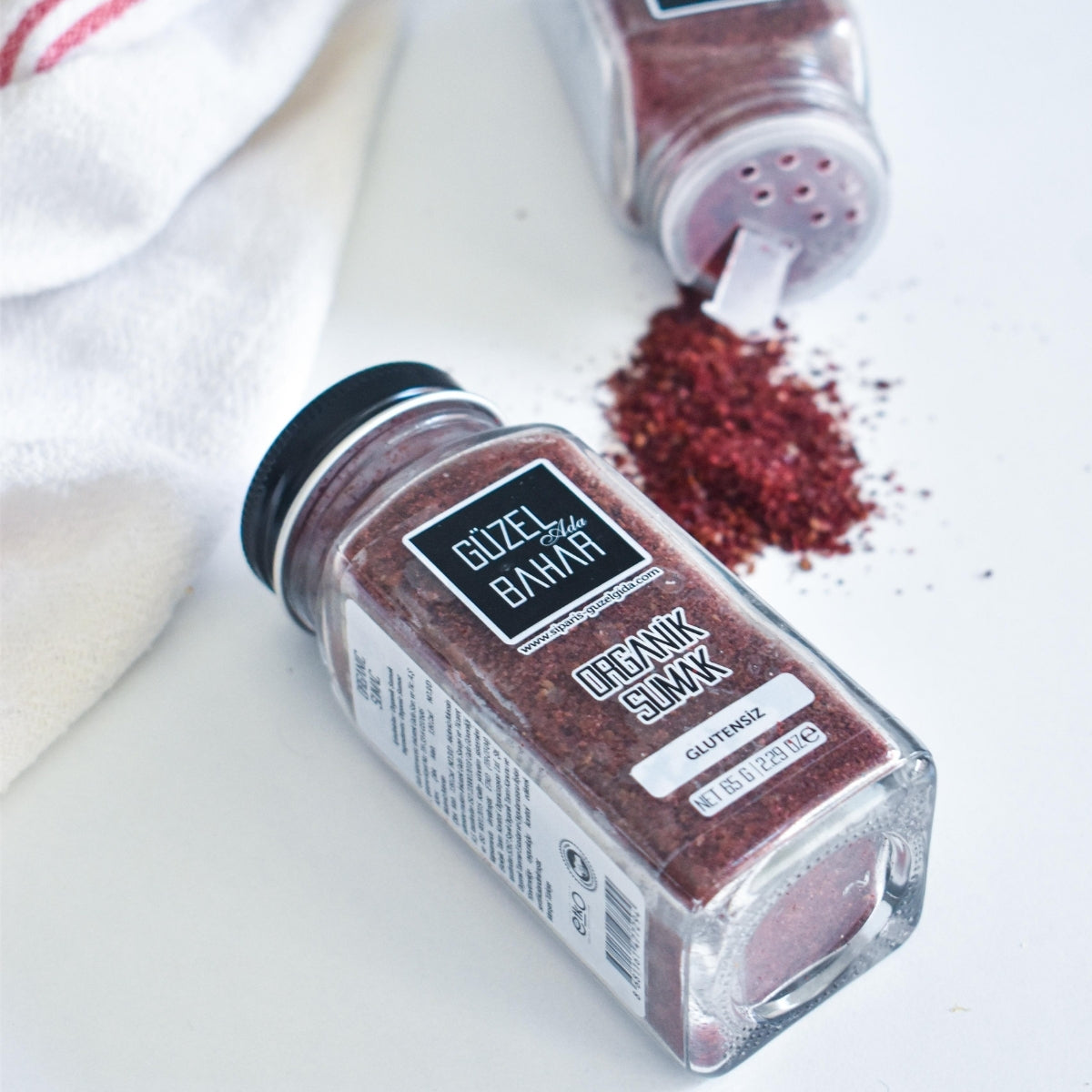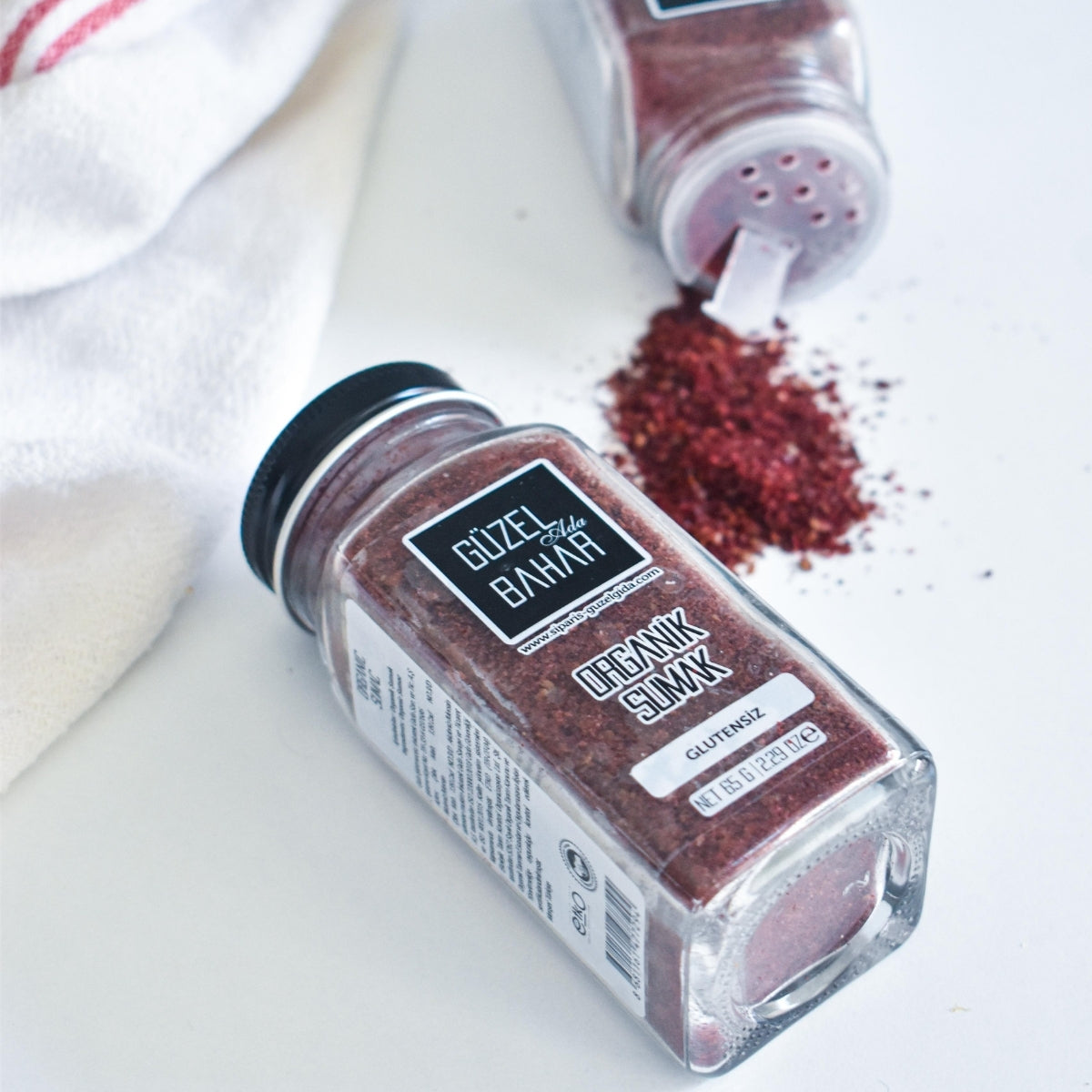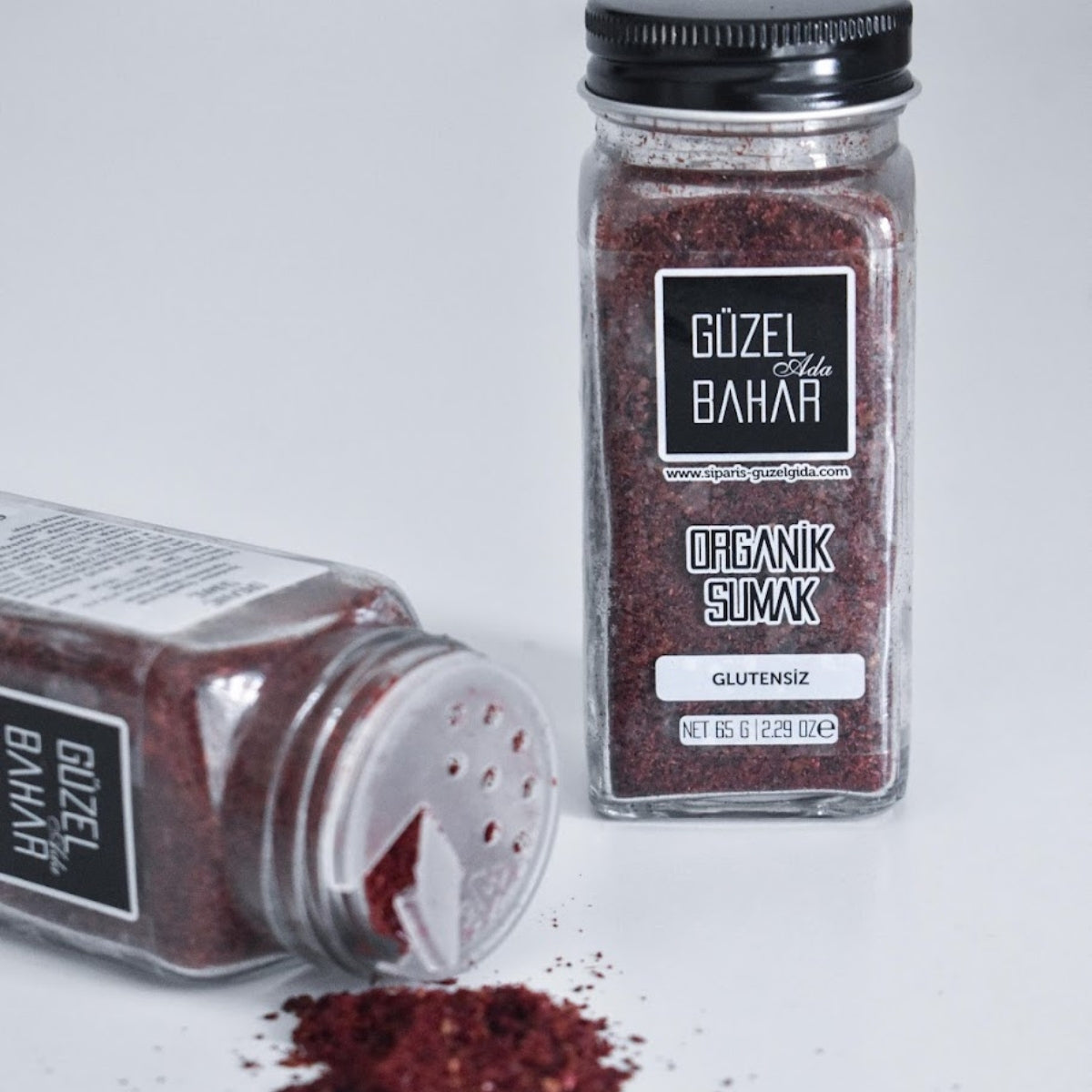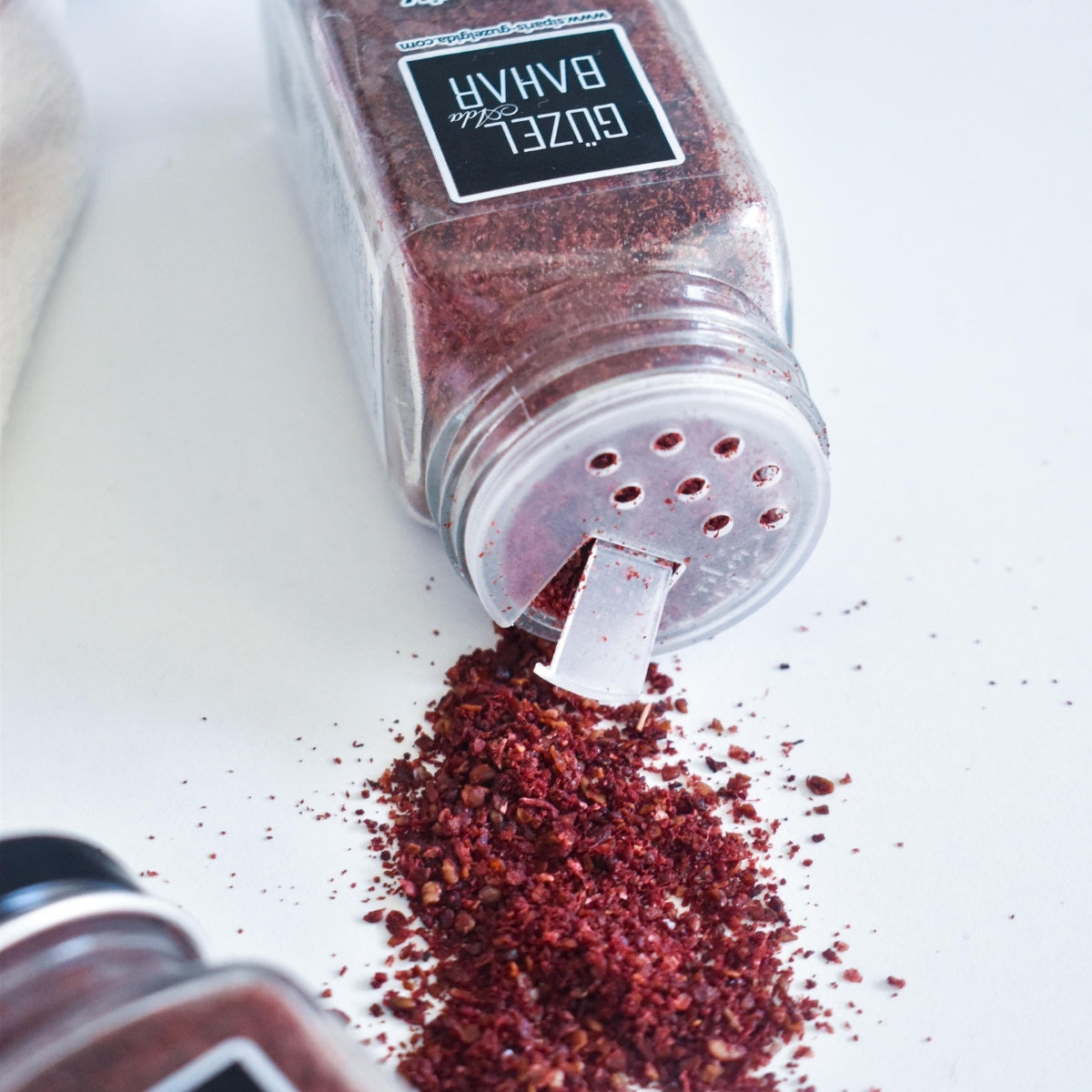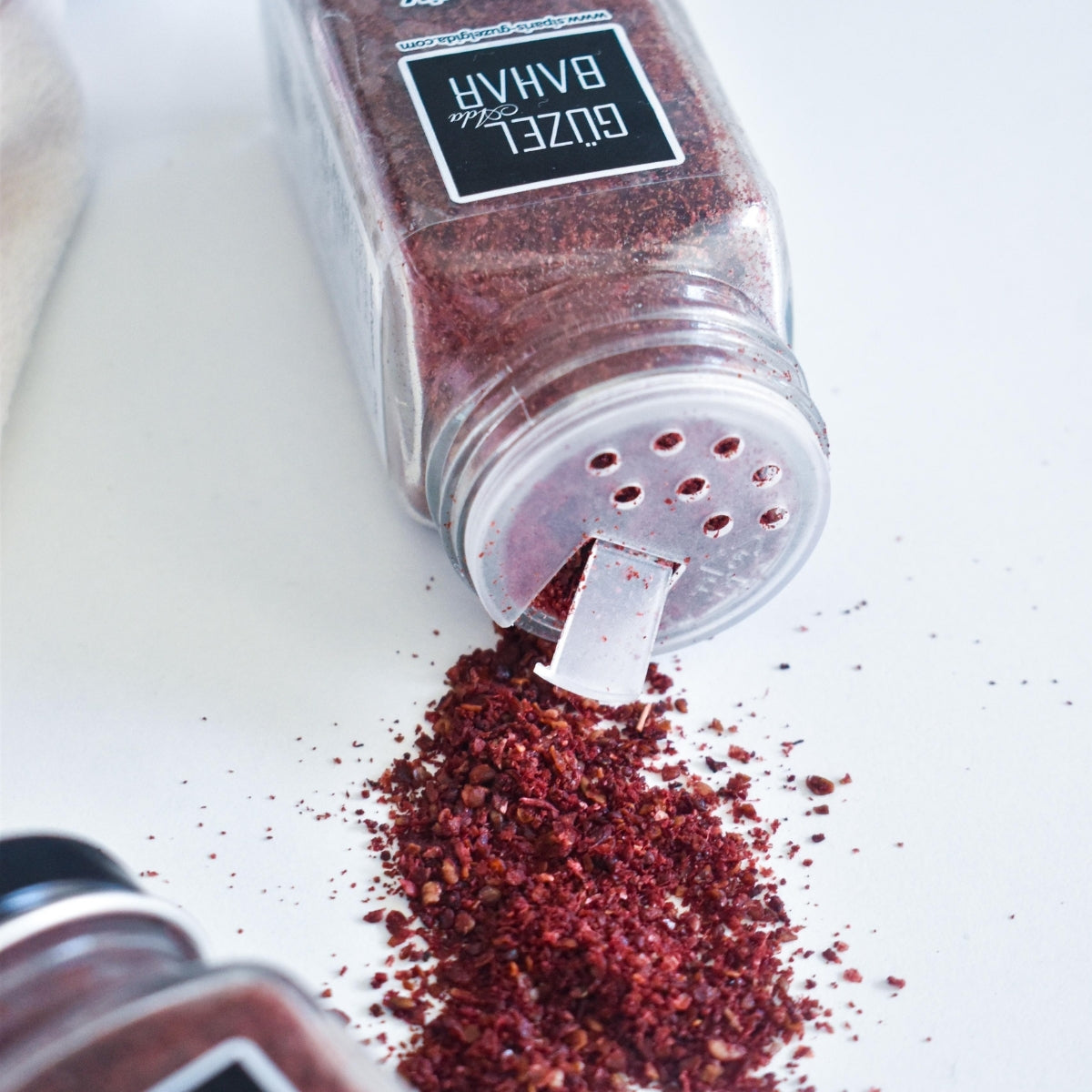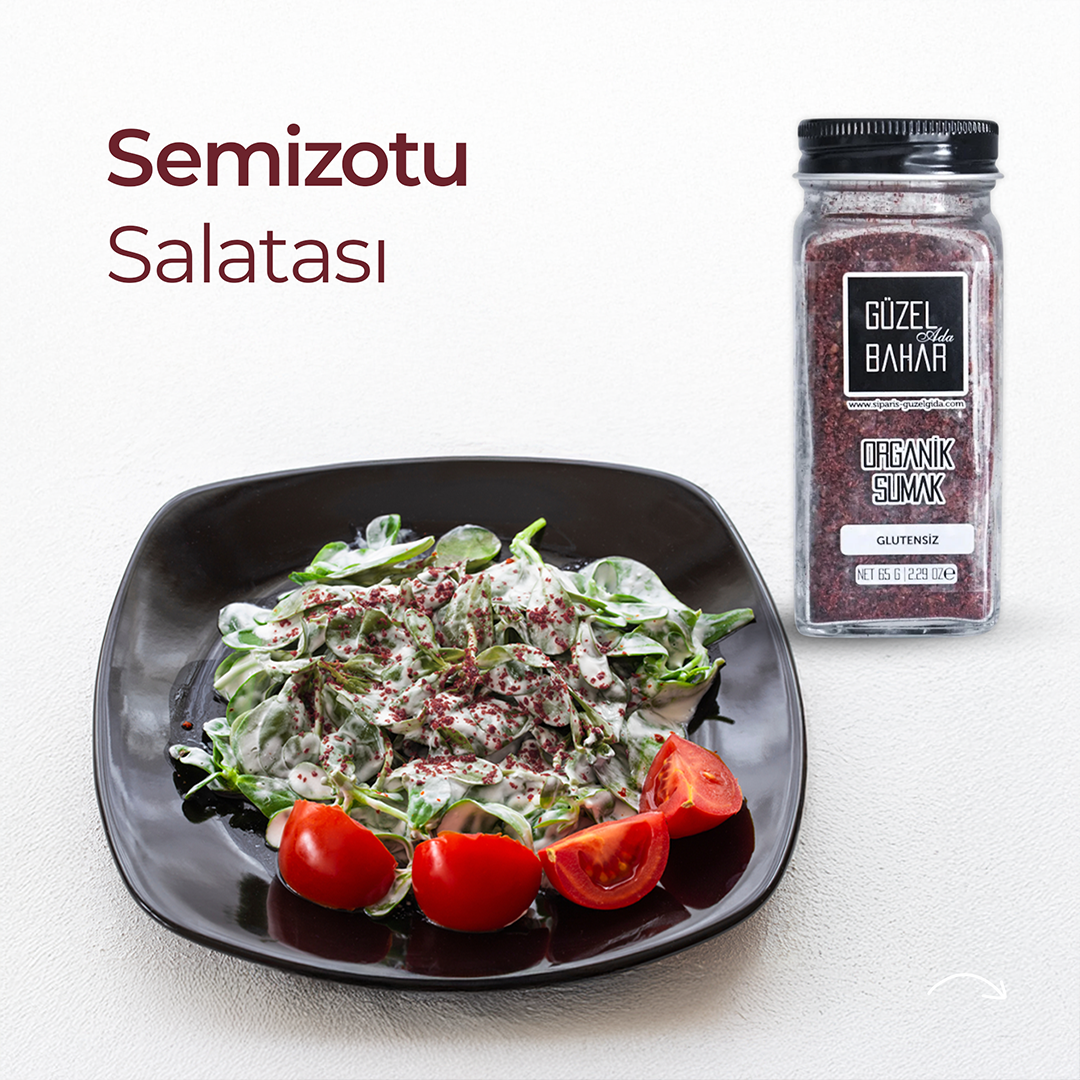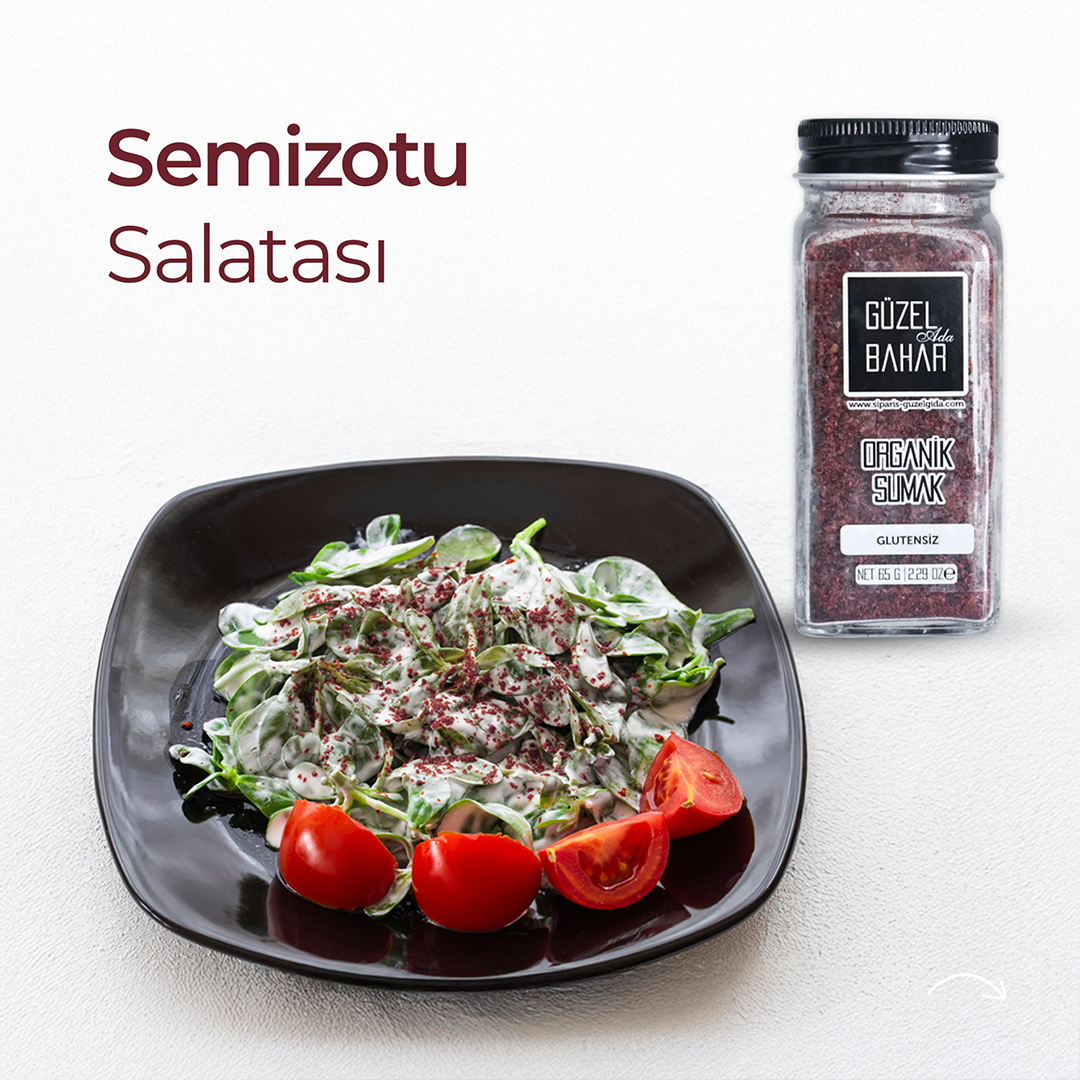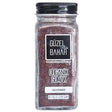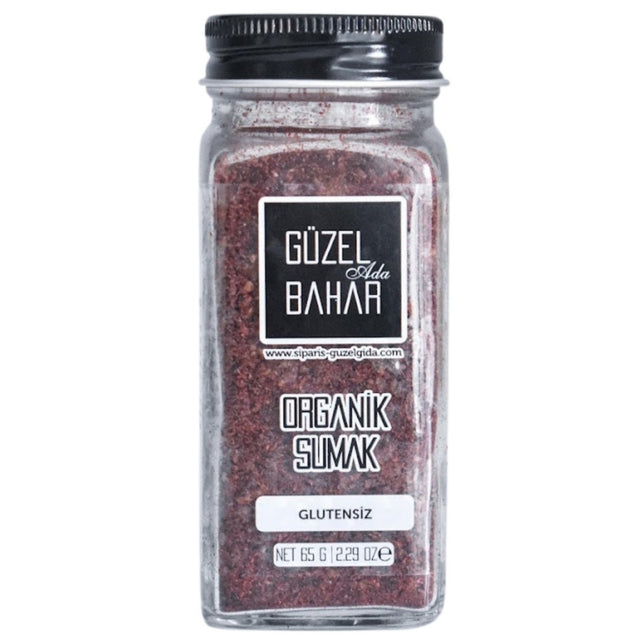What is Sumac?
Sumac, which makes one question its reality with its magnificent color, is the name of a plant species belonging to the Anacardiaceae family and generally grown in Mediterranean and Middle Eastern countries. The reddish fruits of the sumac plant are dried and used as a spice. The fruits of the sumac plant have a sour and slightly bitter taste. Sumac is a spice that is widely used in Middle Eastern and Mediterranean cuisines, adding a characteristic flavor and color to dishes.
How to Use Sumac?
Sumac is a spice that is often used to add flavor and color to dishes and salads. The most common areas where sumac is used are;
In meals: Sumac can be used in a variety of dishes, including meat, chicken, and fish. After the cooking process is complete, sumac is usually sprinkled or mixed into the food at the final stage. It is especially used in dishes such as kebabs, pilaf, and beans, adding a sour and slightly bitter taste to the food.
In salads: Sumac adds a sour flavor and a nice color to salads. It can be sprinkled in salad dressings or directly on the salad. It can be used in various types of salads, especially green salads and shepherd's salad.
In appetizers: Sumac can be used by sprinkling or mixing on appetizers such as hummus, tzatziki, muhammara. It enriches the taste of appetizers and increases their aroma.
In desserts: In some regions, sumac is also used in making desserts. There are sumac dessert recipes, especially in Middle Eastern cuisine. Sumac can be used in or sprinkled on desserts.
In beverages: Sumac is also used in the production of cold drinks in some regions. Especially sumac sherbet can be preferred as a refreshing drink.
The most important point to be careful about when using sumac is not to use too much. Because sumac has a very intense flavor and can disrupt the balance of flavors in a dish if used excessively. You can add a small amount at first and adjust the amount according to your preference after checking the taste.
Why Guzel Ada Organic Sumac?
We are very happy to present you our Organic Sumac spice, which we have carefully selected with strong quality control processes and which excites us a lot. We trust its high quality, which can be understood from its taste, smell and color.
Like all our Organic Spices and organic products, Organic Sumac is also pesticide-free.
No irradiation was performed.
There is no pesticide (agricultural drug residue).
Aflatoxin analysis was performed.
This spice, which stands out with its delicious content obtained from nature, is an ideal choice to add an organic and natural touch to your tables.
How to Store Sumac?
It is important to store spices like sumac correctly to maintain their freshness and quality. Some things you should pay attention to for sumac and other spices:
Airtight Containers: Sumac can lose its quality when it comes into contact with air, moisture and sunlight. Therefore, airtight containers should be preferred for storing spices such as sumac. Glass containers in particular can help spices maintain their freshness for longer.
A Dry and Cool Environment: It is important that the storage place is dry and cool so that the spices are not affected by moisture and light. You can store spices in kitchen cupboards or pantries. They should also be kept away from places exposed to direct sunlight.
Ambient Temperature: The temperature of the environment where spices will be stored is also important. Storing them at room temperature (20-25°C) is generally appropriate. However, avoid hot and humid environments, as this can negatively affect the quality and flavor of the spices.
Retention Period: Spices can lose their freshness over time. So check the dates on the spices you buy and determine the expiration date if possible. It is generally recommended that spices be consumed within 1-2 years.
Avoid Contact with Bad Smells: Keep spices tightly closed and away from other strong odors. This will help preserve the flavor and scent of the spices.
By paying attention to these points, you can keep spices such as sumac fresh for a longer time.

